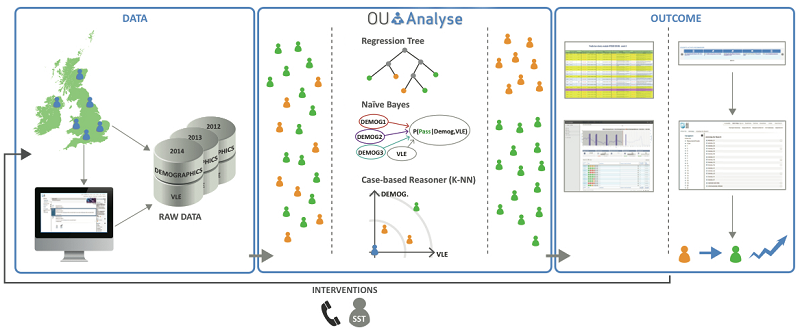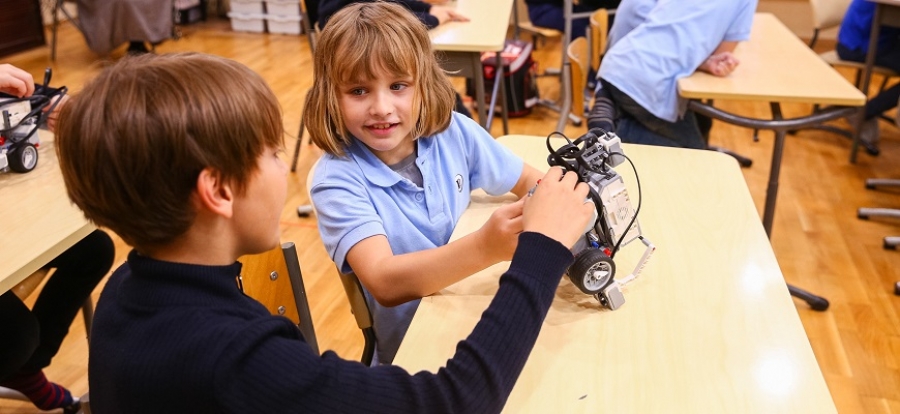As ‘AI’ is heralded as the next big ‘revolution’ in almost every industry you can imagine - from healthcare and manufacturing, to government and e-commerce - it’s hard to separate hype from genuine potential. But amidst this excitement, comparatively little attention has been paid to how AI could affect education.
We can think about the impact of AI on our education system in two main ways:
1. Artificial intelligence in the workplace will lead to automation of many jobs, affecting the types of employment that young people can expect to find in the future. In turn, this affects the skills, knowledge and attitudes that our education system should prioritise.
2. Artificial intelligence in the education system will be used as a tool by learners and educators to improve the effectiveness of our education system.
Much has been written elsewhere about the first (very important) aspect of AI and education (including by my own colleagues at Nesta). However, this article is focused on the second aspect of AI and education - how will AI be used as a tool within education systems?
Over the past month we have been identifying AI-enabled tools being used in the UK education system. We found lots of them, and they can be grouped into three categories:
1. Tools for Learners
Adaptive learning platforms providing personalised pathways that support students to learn in ways that are tailored to their needs (different learning styles, different abilities, different interests, etc). Promising products include CogBooks, Century Tech and Mangahigh.
The real bosses! Children from KS1 receive the gold medals they won in the Mangahigh Boss of the South competition. pic.twitter.com/XOUNJdKOQl
— St Marys School (@stmaryspoole) July 24, 2018
2. Tools for Educators
Reducing teacher workload is high on the list of priorities for most in the education community. Some tools are working to automate assessment, such as Assessment21. Others are aiming to improve the quality and timeliness of feedback, and some are acting as a ‘virtual teaching assistant’, enabling a teacher to focus attention on those who need it most. Jill Watson is a good example of this. And the use of these tools is growing quickly - astonishingly, almost a quarter of schools in China are trialling AI software that can mark students’ essays.
3. Tools for Systems
AI is also good at gaining insights from the large amount of data collected within the education system. This might relate to school performance (Ofsted is using tools to highlight schools that are likely to fail their inspections), teacher practice (Third Space Learning, a 1-2-1 online tutoring service, are using AI to identify best teacher practice) or student performance (Civitas and the Open University have developed tools to highlight students most at risk of dropping out of university).

Via The Open University
Why is this exciting?
Although relatively young, these tools are trying to tackle some the most persistent and stubborn problems facing educators in the UK and around the world.
Whether by reducing teacher workload (teachers in the UK spend 60 per cent of working time on non-teaching tasks), expanding access to education (264 million children around the world don’t go to a school) or ensuring an education is tailored to a learners interests and aspirations - AI has the potential to revolutionise aspects of our education system.
But alongside great potential is high uncertainty. Moving from isolated examples of products being used successfully to widespread implementation is difficult. Equally, widespread use of AI in schools would throw up a host of other questions: Who owns a child’s performance data and what can it be used for? How much technology is too much technology for a child’s emotional and social development? What does a teacher do if an algorithm is leading a class?
We’re just beginning the next stage of our research into how we can maximise the positive potential (and minimise negative consequences) of AI within our education system. But here are five ideas for teachers, entrepreneurs and policymakers to start thinking about:
1. Widen the conversation
We need teachers, learners and parents (the users of AI tools) to get involved in the development of AI for education. This will improve products, identify potential implementation hurdles and generate interest. The EDUCATE programme is one model for doing this. It brings together academic research, education practice and entrepreneurs to improve the quality of education technology.
2. Invest in training teachers
We know that technology is only as ‘smart’ as the person pressing the buttons. To ensure that AI maximises its potential, policymakers must ensure that teachers are provided with adequate training to use products confidently. Equally, technology companies should work to ensure that teachers are supported to use products after they have been purchased.
3. Present more information, more clearly
AI is famously hard to define, and algorithms are often completely opaque. We need better information about what products are able to do, how they do it, and on what data they were trained. Purchasers of technology (school leaders and teachers) also need better information about the range of options available to them.
4. Consider collective intelligence
As AI use develops, we need to explore how human and machine intelligence can be combined to make the most of our collective knowledge. Education is too complex to separate human and machine decision-making. Nesta’s new Centre for Collective Intelligence Design will be exploring how to combine human and machine learning at scale.
5. More rigorous evidence of impact
With most edtech products relying on individual case studies to show their impact, rather than more consistent measurement, it’s actually very hard to build a picture of how much of an impact technology is having on problems like teacher workload. Only when companies set out to measure impact consistently will we be able to argue convincingly for the value of technology in addressing specific challenges. Similarly, government should help to support greater attention to evidence of impact at the system level, help to build an evidence base for what works, and encourage entrepreneurs to focus on areas where the impact could be greatest.
As Nesta continue to explore the potential of AI in the education system, we’re keen to hear your ideas. If you’re interested in being interviewed as part of the project, or just want to find out more, please contact [email protected].
Want to receive cutting-edge insights from leading educators each week? Sign up to our Community Update and be part of the action!


















